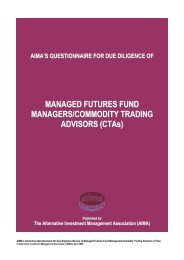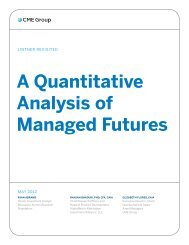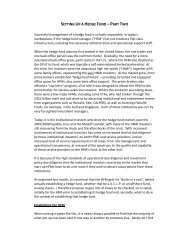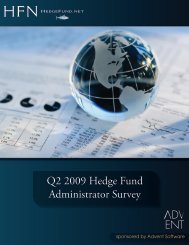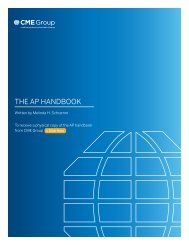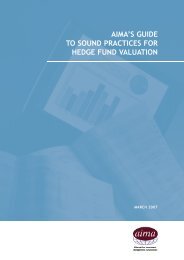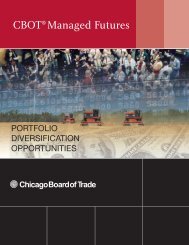Stochastic Volatility and Seasonality in ... - Interconti, Limited
Stochastic Volatility and Seasonality in ... - Interconti, Limited
Stochastic Volatility and Seasonality in ... - Interconti, Limited
Create successful ePaper yourself
Turn your PDF publications into a flip-book with our unique Google optimized e-Paper software.
The figure shows the estimated seasonal function ν(t) for the full-sample as well as the estimated<br />
seasonal function for the first sub-period, ν 1 (t), <strong>and</strong> the estimated seasonal function<br />
for the second sub-period, ν 2 (t). The estimated seasonal functions seem very similar with<br />
amplitudes of similar magnitude <strong>and</strong> with m<strong>in</strong>ima <strong>and</strong> maxima atta<strong>in</strong>ed at about the same<br />
time of the year. The amplitude is slightly higher <strong>in</strong> the second sub-period <strong>and</strong>, if not simply<br />
due to r<strong>and</strong>omness, this could be due to the above-mentioned price floors ma<strong>in</strong>ta<strong>in</strong>ed by the<br />
US government programs up through the 1980s.<br />
I Figure 5 we have similarly illustrated the seasonal patterns of the mean-revert<strong>in</strong>g level of<br />
the convenience yield as estimated <strong>in</strong> the first sub-period, α 1 (t), the second sub-period, α 2 (t),<br />
as well as for the full sample, α(t).<br />
[ INSERT FIGURE 5 ABOUT HERE ]<br />
While the estimated functions atta<strong>in</strong> m<strong>in</strong>ima <strong>and</strong> maxima at the same times of the year,<br />
the amplitudes seem very different. However, though the amplitude for the first sub-period<br />
estimation is much larger, it may be noted that the mean-reversion tendency is at the same<br />
time much lower than for the second sub-period, as reflected <strong>in</strong> the β estimates. Hence, the<br />
overall seasonal effect on the level of the convenience yield may not differ very substantially<br />
across the two sub-periods.<br />
F<strong>in</strong>ally, it is seen from Table 4 <strong>and</strong> Table 5 that the estimated correlation coefficients (ρ 12 ,<br />
ρ 13 , <strong>and</strong> ρ 23 ) are very similar across the two sub-periods. Thus, the conclusion that, e.g.,<br />
convenience yields do not behave like tim<strong>in</strong>g options is robust over time s<strong>in</strong>ce <strong>in</strong> both subperiods<br />
the correlation coefficient, ρ 23 , between the convenience yield <strong>and</strong> volatility is close to<br />
zero <strong>and</strong>, <strong>in</strong> fact, consistently estimated slightly negative. Also, the “<strong>in</strong>verse leverage effect” is<br />
robust over time s<strong>in</strong>ce the correlation coefficient, ρ 13 , between the spot price <strong>and</strong> the volatility<br />
is consistently estimated positive <strong>and</strong> of the same magnitude across the sub-periods.<br />
4 Conclusions<br />
In the paper we have set up a stochastic volatility model of commodity price behavior <strong>and</strong><br />
estimated the model parameters us<strong>in</strong>g panel-data of both soybean futures <strong>and</strong> soybean options.<br />
The estimation approach thus use the <strong>in</strong>formation <strong>in</strong> both time series characteristics of the<br />
evolvement of soybean product prices as well as the <strong>in</strong>formation <strong>in</strong>herent <strong>in</strong> futures price<br />
structures <strong>and</strong> option price structures, such as implied volatility surfaces.<br />
26


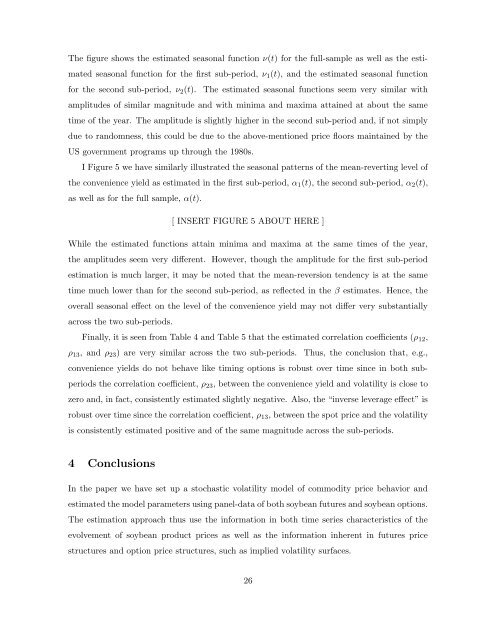
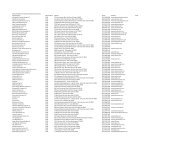
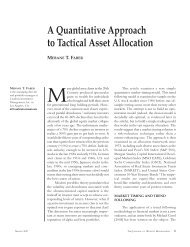
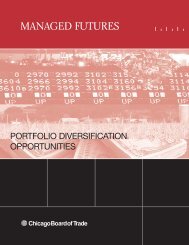

![Definitions & Concepts... [PDF] - Cycles Research Institute](https://img.yumpu.com/26387731/1/190x245/definitions-concepts-pdf-cycles-research-institute.jpg?quality=85)
